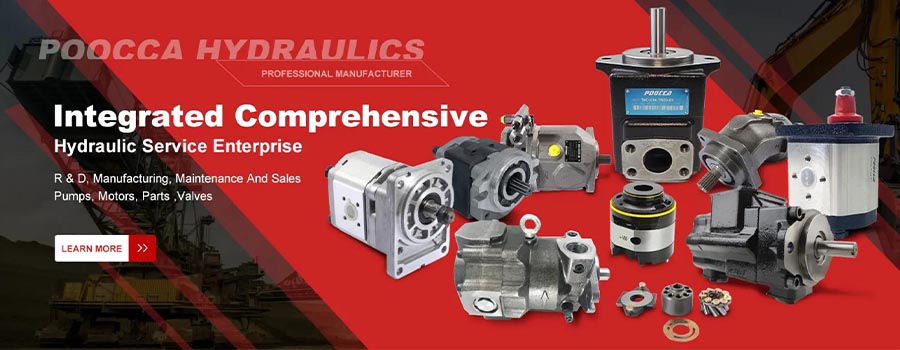Introduction:
Hydraulic pumps are essential components in hydraulic systems, providing the necessary fluid flow and pressure to power various machinery and equipment. Among the different types of hydraulic pumps available, gear pumps and vane pumps stand out as two widely used and distinct options. In this comprehensive guide, we will delve into the features, working principles, and applications of both gear pumps and vane pumps.
Gear Pumps:
Gear pumps are renowned for their simplicity and reliability. They operate by utilizing meshing gears to displace hydraulic fluid and create a continuous flow. As the gears rotate, fluid is drawn into the pump and trapped between the gear teeth before being forced to the pump’s outlet under pressure. Due to their straightforward design, gear pumps are ideal for applications requiring medium pressure, such as in construction machinery, agricultural equipment, and material handling systems.
Vane Pumps:
Vane pumps are known for their efficiency and ability to handle higher pressures. These pumps feature a rotor with vanes housed in slots. As the rotor rotates, the vanes are pushed outward by centrifugal force, creating a vacuum that draws in hydraulic fluid. The fluid is then discharged at the pump’s outlet under pressure. Vane pumps are widely used in industrial machinery, aerospace systems, and hydraulic presses.
Working Principle – Gear Pumps:
Gear pumps function based on the principle of positive displacement. The interlocking gears ensure a continuous flow of hydraulic fluid from the pump’s inlet to the outlet, making them suitable for consistent flow rate applications.
Working Principle – Vane Pumps:
Vane pumps also operate on the principle of positive displacement. As the rotor spins, the vanes extend and retract, drawing in and expelling hydraulic fluid in a cyclical manner, enabling precise flow control.
Design Variations – Gear Pumps:
Gear pumps are available in different design variations, such as external and internal gear pumps. External gear pumps have two gears that mesh externally, while internal gear pumps have a larger gear with internal teeth and a smaller gear inside, meshing internally.
Design Variations – Vane Pumps:
Vane pumps can be categorized as fixed-displacement or variable-displacement pumps. Fixed-displacement vane pumps deliver a constant flow rate, while variable-displacement vane pumps allow for flow rate adjustment as needed by altering the pump’s displacement.
Efficiency – Gear Pumps:
Gear pumps are generally less efficient than vane pumps, especially at higher pressures. They may experience more internal leakage and energy losses.
Efficiency – Vane Pumps:
Vane pumps offer higher efficiency due to reduced internal leakage and smoother fluid flow, making them preferred for applications where energy conservation is crucial.
Noise Levels – Gear Pumps:
Gear pumps can produce more noise during operation due to the meshing of gears and fluid turbulence.
Noise Levels – Vane Pumps:
Vane pumps are quieter in operation, making them suitable for applications where noise reduction is a priority.
Conclusion:
Hydraulic pumps play a vital role in numerous industries, and understanding the differences between gear pumps and vane pumps is essential for selecting the right pump for a specific application. Gear pumps are valued for their simplicity and cost-effectiveness, while vane pumps are favored for their efficiency and high-pressure handling capabilities. By considering the working principles, design variations, efficiency, and noise levels of these hydraulic pumps, engineers and operators can make informed decisions to optimize their hydraulic systems’ performance.
Post time: Jul-20-2023





